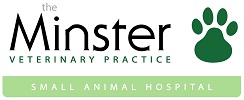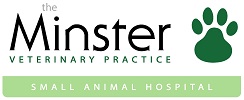Hospitalisation
• Dog ward with access to a secure outdoor run for exercise
• Cat only ward
• Isolation ward (for infectious diseases)
• Exotic ward
• Intensive care
Overnight Care
All of the in-patients requiring overnight care are supervised round the clock, so your pet will not be left alone at night. Our team of ‘out of hours’ vets and nurses offer treatment and monitoring throughout the night and over weekends and bank holidays so you can be sure they are in good hands 24/7.
Laboratory
• Blood tests
• Urine tests
• Microscopy
• Blood typing
Diagnostic Equipment
CT Scanner
A computerised tomography (CT) scan uses X-rays and a computer to create detailed images of many structures inside the body, including the internal organs, blood vessels and bones.
Digital Radiography (X-Rays)
Just like digital cameras, digital radiography allows rapid production of high-resolution images.
Radiographs are particularly useful for identifying problems within bones and joints. They can
also be used to assess the heart and lungs and the gastro-intestinal and urinary systems.
Usually animals need sedating or anaesthetising for radiography as they need to be very still.
Dental Radiography (X-Rays)
In some cases Dental Radiography can be a useful tool as it offers a way to visualise the entire length of every tooth in the mouth of a cat, dog or rabbit , including the surrounding jaw. This provides a wealth of information about the disease status of the teeth, allowing the vet to make a much more informed decision about what treatment is required.
Ultrasound
Ultrasound examinations are ideal for looking at the abdominal organs, the gastro-intestinal, reproductive and urinary systems and the heart. The colour-flow facility allows us to track the movement of blood within the heart and identify abnormalities. An ultrasound examination can also be used to identify if your pet is pregnant. This can be done without sedation in some cases, however if your pet is pain or anxious then we advise sedation in order to make the procedure as stress-free as possible.
Endoscopy – Flexible and Rigid
Endoscopy uses a tiny camera, which is within a flexible or a rigid tubing. This can be used to examine the inside of the airways, the gastro-intestinal and the urinary systems. Endoscopy can be used to collect samples and also to retrieve foreign material. General anaesthesia is needed for endoscopy as the animal must be very still.
Laparoscopic (Keyhole) Surgery
Laparoscopic surgery can be used as a minimally invasive technique for a number of procedures. We offer laparoscopic bitch spays which are less invasive than conventional bitch spays. Laprascopy can also be used to collect biopsy samples from a variety of abdominal organs.
Electrocardiography (ECG)
Recording the trace of the electrical activity of your pets’ heart allows us to determine the cause of some heart conditions and also to monitor the effectiveness of treatment. We can also use this to monitor your pet’s heart rhythm during procedures.
Doppler Blood Pressure
Measuring blood pressure is very useful in a variety of conditions. High blood pressure can cause serious problems such as blindness if left untreated. Your pet does not need sedating for blood pressure measurement, we put a cuff around their leg or tail. Blood pressure measurement also forms part of our monitoring whilst animals are under general anaesthetic.
Anaesthetic monitoring equipment
Our nurses and vets are trained to use the most modern anaesthetic agents. We monitor our patients carefully to ensure their health through the anaesthetic period. Our monitoring equipment includes blood pressure measurement, capnography, pulse oximetry and electrocardiography.

